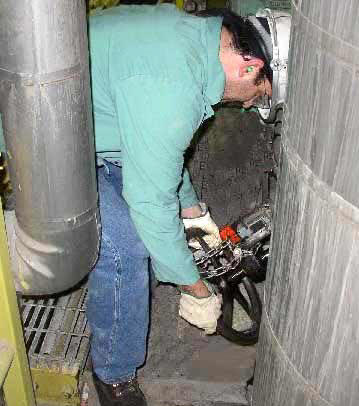 |
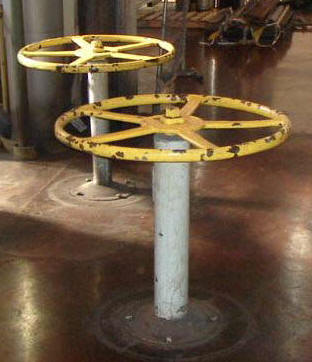 |
| Low, constrained area, hard to turn | Good height, clearance, and wheel size |
Background
The two main issues that involve valves are:
- Access: Hard to reach, poor orientation of the valve handle, etc.
- Force:
Valves are critical issues in certain process industries like chemical plants, refineries, and electric power generation plants. However, problems with valves can be found in almost any type of facility. Indeed, at home, access to the main water shut-off valve can often be surprisingly difficult.
Terminology
The valve is the device inside the pipe that closes. There are several basic categories of valves, such as ball, butterfly, and gate valves, but these are not visible from outside the pipe and generally irrelevant to the ergonomics issues.
The valve wheel (or handle or lever) is what you turn and is the focus of this discussion. However, shop jargon often omits the word “wheel,” which can cause confusion, i.e., someone might refer to “improving the valve,” meaning the valve handle, not the valve itself inside the pipe.
Ideas and Options
Access
Rerouting
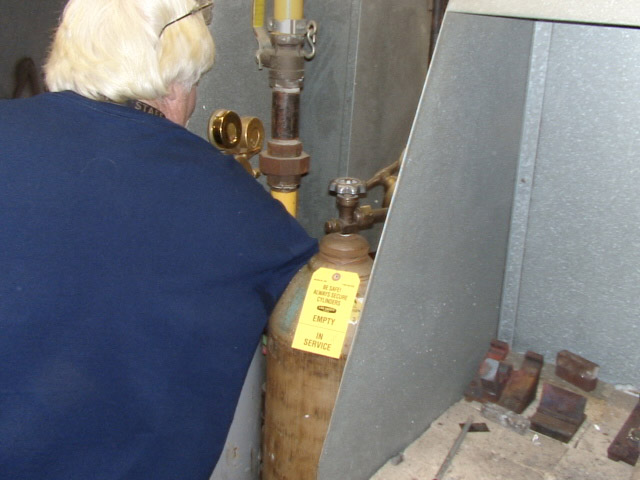 |
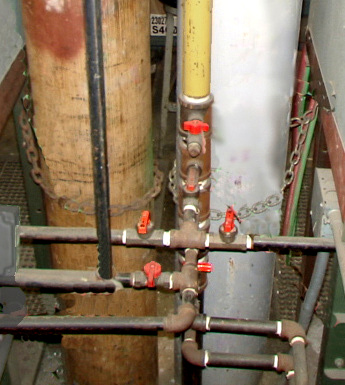 |
| Difficult access to valve handles | View of valves from opposite side |
The example above shows a problem that can be found in many production operations: The valve handles are located on the far side of the workstation and difficult to access. The valves are hidden from sight and a cause of wasted time and possible serious errors. In situations like this, the key valve handles should be rerouted to provide access.
 |
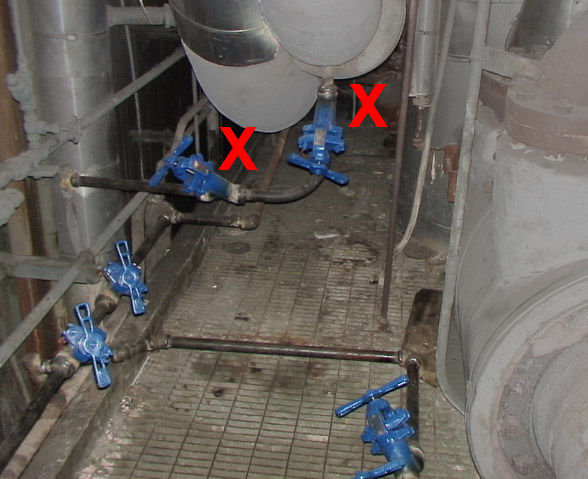 |
| Rerouted valve handles (x marks previous location of handles) | |
These photos from an electric power plant shows valve handles that were relocated. This plant initiated a concerted effort to systematically relocate all inaccessible valves.
Reach rods
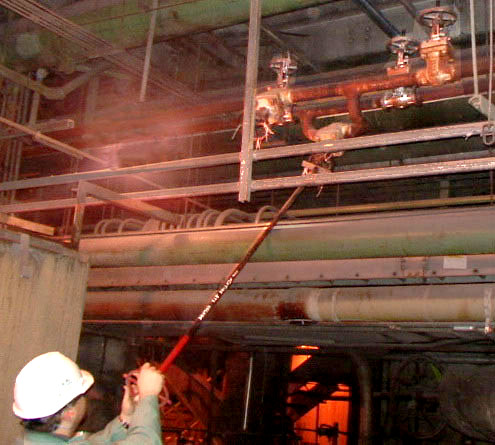 |
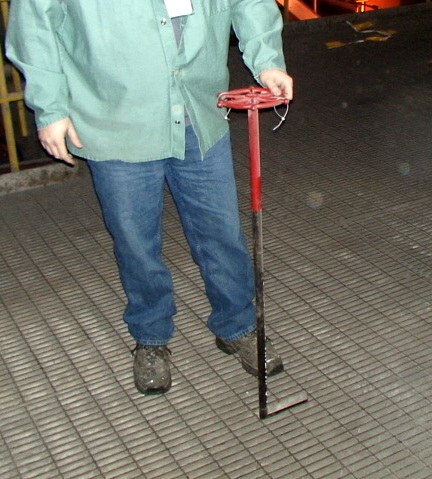 |
 |
| Reach rod to overhead valve | Reach rod through grate to valve below | Reach rod held to show end piece |
Reach rods are commonly used in large process plants. The concept can be adapted for use in general industry.
The reach rods shown above are portable and can be used in multiple locations. Note the orientation of the valve handle in the left hand photo. modified to be accessible from below.
 |
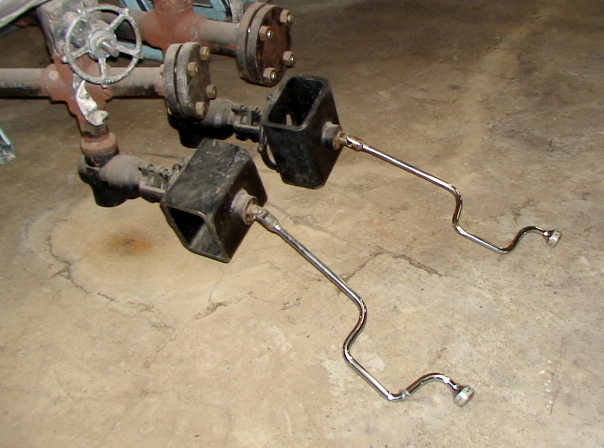 |
| Permanent reach rod | Speed wrenches used as reach rods |
Permanent reach rods can also be installed. In essence, a reach rod relocates the valve wheel to a more accessible position. The speed wrenches above right show a clever technique for valve handles that are slightly too low or beyond easy reach. The universal joint at the end provides some play — the rod does not necessarily need to be rigid, straight out from the valve handle.
Chain wheels
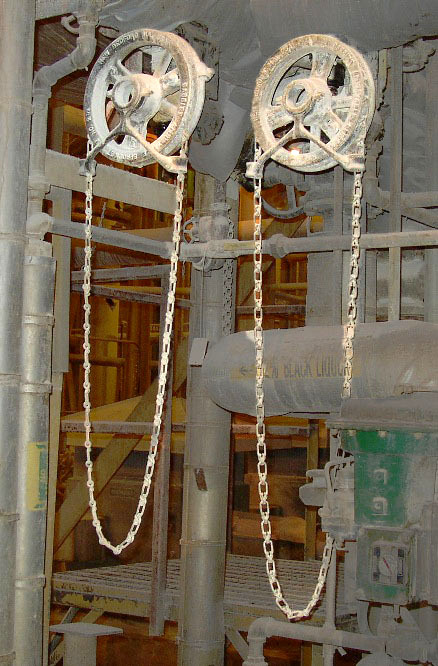 |
 |
| Chain wheels enable turning from a lower level | |
Chain wheels enable turning a valve wheel from a lower level, again very common in certain industries.
 |
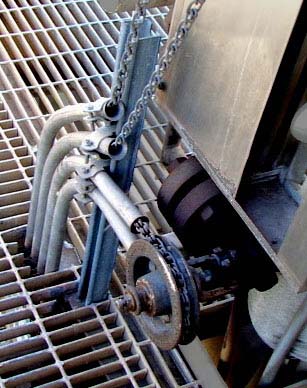 |
| Valve chain leading to conduits | Close up of conduits |
Chains can be routed through conduits to go around corners and thread through equipment. This technique provides good potential throughout industry for turning many types of handles and wheels.
Opening (force reduction)
Valve wrench
 |
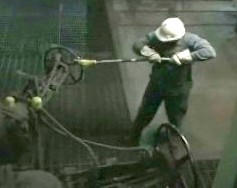 |
| Valve wrench | Long valve wrench |
Simplest and most common approach. Perhaps overly relied on. (“If the valve doesn’t open, get a longer wrench.”)
Impact wheel
 |
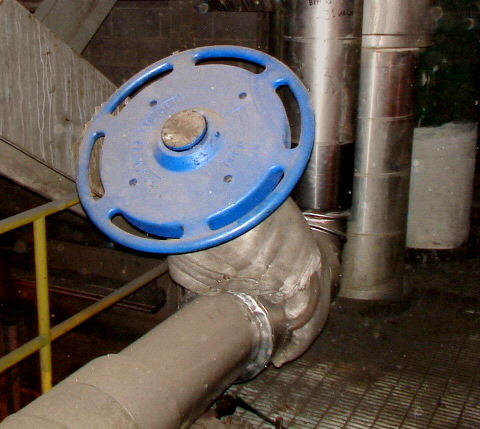 |
| Impact wheel combined with chain | Impact wheel with hand holds |
An impact wheel is a heavy plate that serves as a kind of hammer to move the valve wheel. It rotates freely a short distance, which enables you to rock it back and forth and build up some momentum to hit the main wheel.
The photo above left shows a version that is combined with at chain. The style at right is for locations that are accessible from the walking surface and is operated directly by holding the hand grips. These wheels are sometimes known as “valve knockers” or other similar names.
Gearing
 |
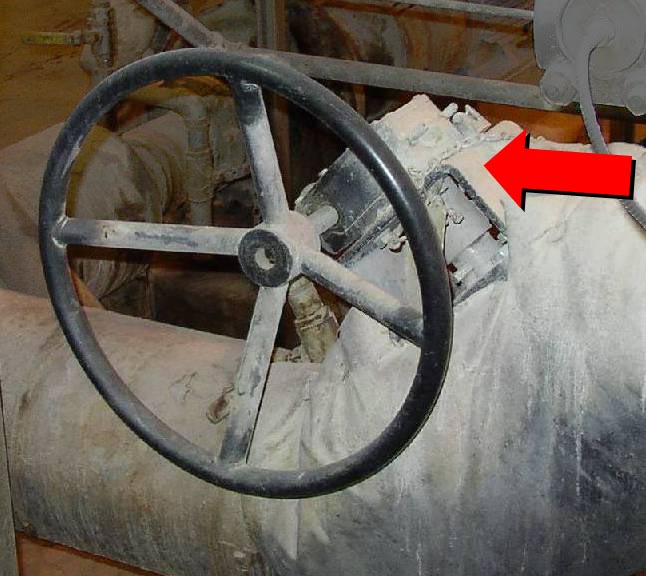 |
| Gear reduction | Gear box |
Gearing is helpful in two ways: (1) gear reduction to help turn heavy or sticking valves, and (2) gear box to change the orientation of the wheel for better access.
Power drivers
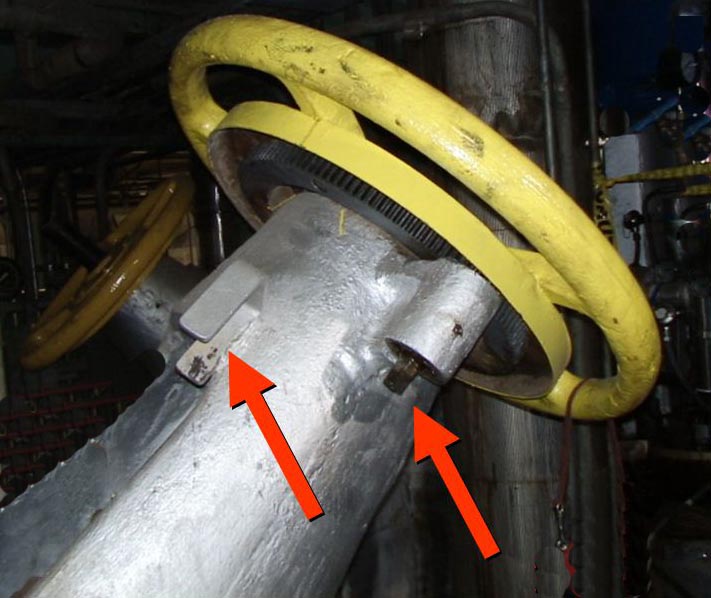 |
 |
| Impact wrench | Portable valve actuator (drill motor on a support post) |
Power drivers can be used in a couple of ways. It is common to use impact wrenches for certain types of heavy valves. Typically a holder and fitting are permanently attached to the valve housing (left and right arrows respectively in the photo). The wrench itself is portable and can thus be used on multiple valves.
The example above right shows a heavy drill motor and support post used on a wheel with a gear reduction ratio of about 100 to 1. In other words, the wheel was easy to turn, but it needed to be turned hundreds of times to move the valve a short ways. By welding a nut to the hub of the valve wheel and using a socket rather than a drill bit, the wheel can be easily turned. In this specific case the time to turn the valve was reduced from more that one hour to about 20 minutes, i.e., a 66% reduction, along with less wear and tear on the operator.
Motors and power assists
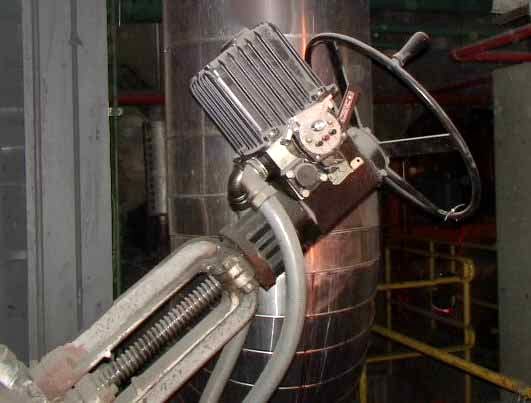 |
 |
| Motorized (the wheel is auxiliary) | Power assist (lever actuated valve) |
Motorized valves are common and are useful both to (1) help turn heavy valves and (2) activate valves in hard-to-access locations.
